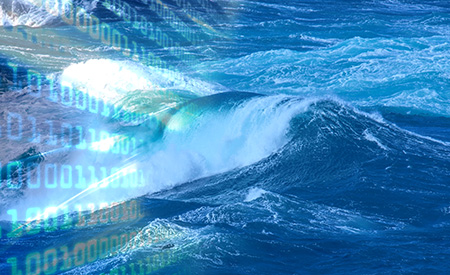/H2020/DTOCEANPLUS
Type of resources
Available actions
Topics
Keywords
Contact for the resource
Provided by
Formats
status
-

The Structured Innovation (SI) design tool comprises innovation methodologies that can enhance concept creation and selection in ocean energy systems, enabling a structured approach to address complex ocean energy engineering challenges where design options are numerous. Thus, it can facilitate efficient evolution from concept to commercialisation. The tool is one of a kind beyond the current state-of-the-art, that will enable the transfer and adaptation of the QFD/TRIZ and FMEA methodologies to the ocean energy sector.
-

This document serves as the technical manual of the alpha version of the system performance and energy yield module, including all the data requirements, main functions, interfaces and all the pertinent technical details.
-

This report documents the outcome of the verification of the assessment design tools. The goal of the verification task was to ensure that the tools: respond correctly to a varied set of inputs; perform their functions in an acceptable time and reasonable use of computational resource; are adequate in terms of usability; and, are verified against control data. The following actions were completed for all tools as part of the verification and are described in detail in this report: definition of the verification cases and evaluation criteria; organisation of training sessions for partners; collection of data for each verification case; running the verification cases by partners; analysis of the results based on quantitative and qualitative assessments, creation of a task list of changes that could improve the tool and their performance.
-

A coherent set of functional and technical requirements have been developed for the DTOcean+ suite of design tools based on analysis of gaps between the current state-of-the-art tools, learning from the original DTOcean project, and the stakeholder expectations identified in the user consultation survey. The technical requirements in this document are translated from the general requirements for the software suite of tools, and specific requirements (functional, operational, user, interfacing, and data) for the assessment tools that will be developed as part of this project.
-

A coherent set of functional and technical requirements have been developed for the DTOceanPlus suite of design tools based on analysis of gaps between the current state-of-the-art tools, learning from the original DTOcean project, and the stakeholder expectations identified in the user consultation survey. The technical requirements in this document are translated from the general requirements for the overall suite of tools, and specific requirements (functional, operational, user, interfacing, and data) for the Deployment design tool that will be developed as part of this project.
-

This document summarises both the functionalities as well as the more technical aspects of the code implemented for this module. This module will provide the user with four assessments: identification of the potential presence of endangered species in the area; environmental impacts estimated using relevant metrics such as the underwater noise or the collision risk between vessels/devices and the marine wildlife; estimation of the carbon footprint of the project in terms of two mid-point indicators; information to improve the social acceptance of the project considering cost of consenting and jobs creation.
-

The aim of this document is to present the activity carried out by the three industrial partners who validated the DTOcean+ suite against five tidal energy validation scenarios.
-

The present document refines the previous version submitted in October 2019, updates the initial assumptions, and depicts more clearly the exploitation routes and actions to reduce risks.
-

The objective of Task 4.3 was to carry out the testing of the Stage Gate design tool in order to verify that it meets all the previously defined requirements (in WP2 and T4.1). This report documents the outcome of T4.3 “Verification of the Stage Gate design tool.”
-

This document is the third annual report on dissemination and communication activities regarding DTOceanPlus project.
 Catalogue PIGMA
Catalogue PIGMA